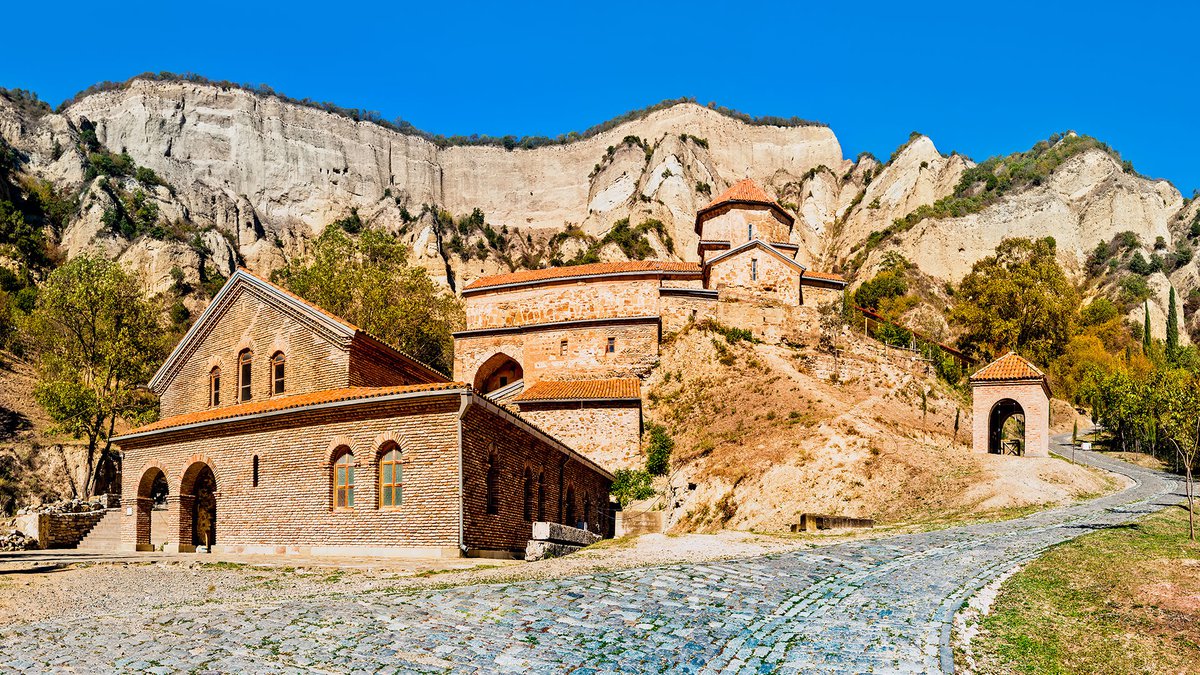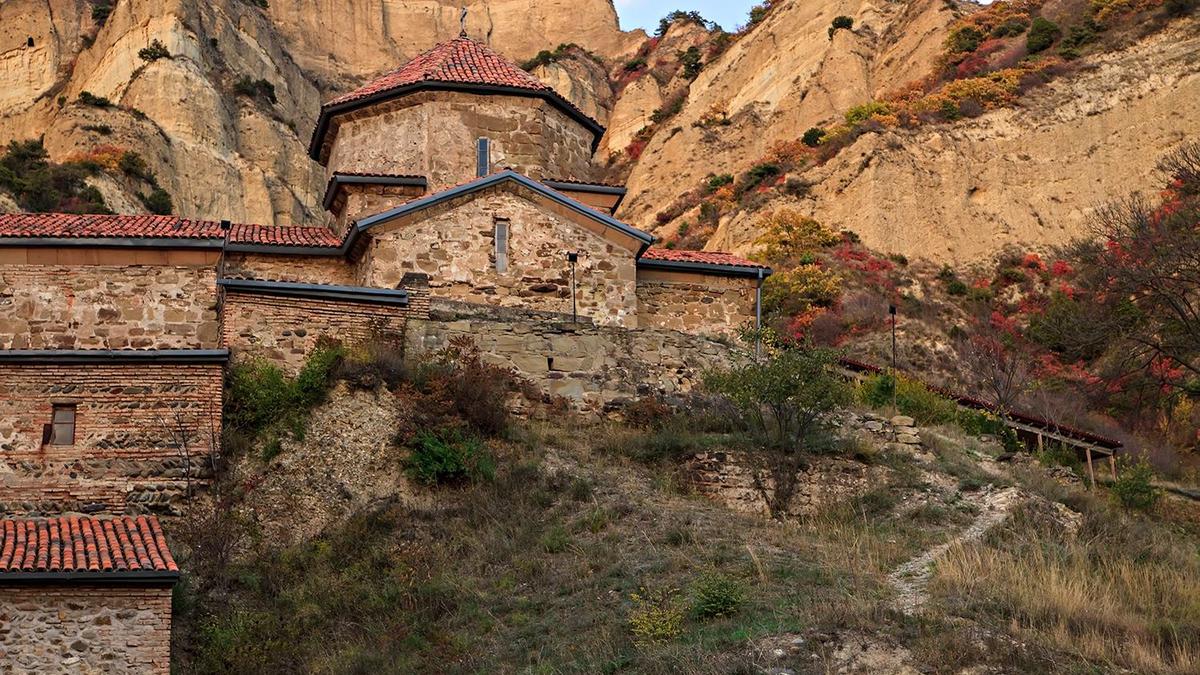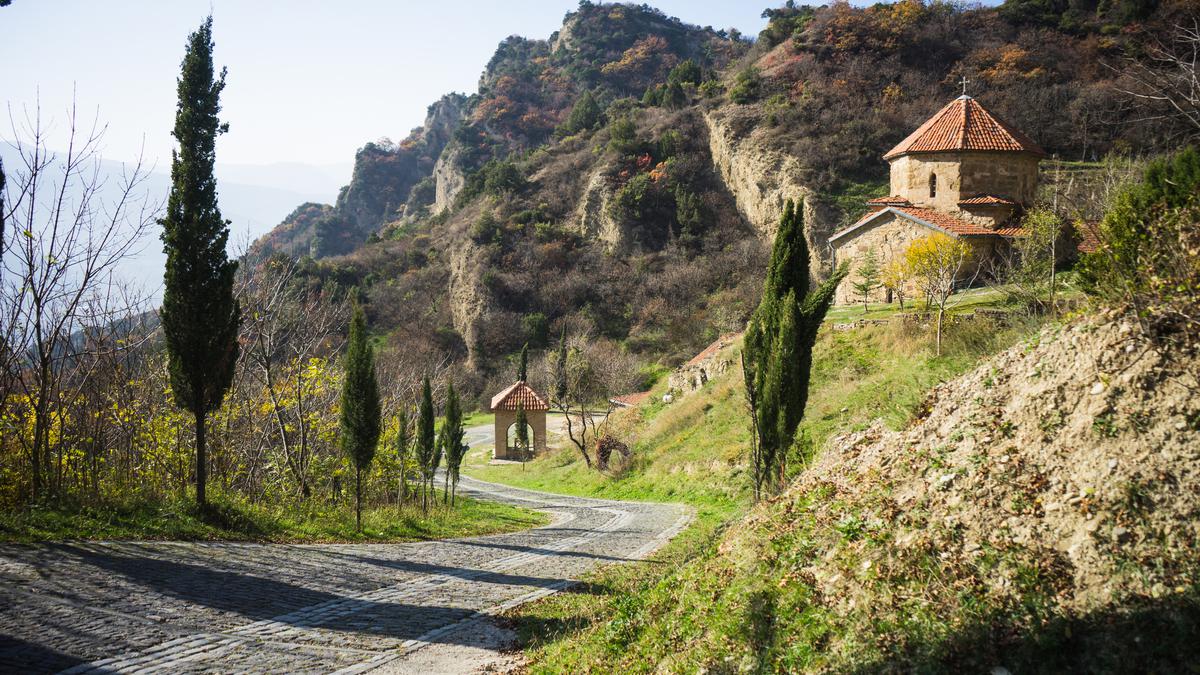
What to see in Georgia - the ancient architectural monument complex of monasteries Shiomgvime.
From the point of view of history, the uniqueness of the monastery of Shio mgvime is confirmed by documentary sources. It was founded by the monk Shio, one of the 13 Assyrian fathers. In the 6th century, the church of John the Baptist appeared on the territory of the complex. In the future, Shiongvime was taken under the guardianship of the famous Georgian king David the Builder - the monastery received the official status of royal possessions...
In the VI century, thirteen Assyrian founding fathers arrived on the territory of modern Georgia. These were Christian missionaries, who, in modern terms, were engaged in the popularization of Christianity. One of them, according to historical data, was named Shio. Later his name became part of the name of the monastic complex Shio mgvime. Here Shio organized one of the first monastic communities.
There is a cave near ancient Mtskheta, which is named after him. Shio spent the last years of his life there, becoming a hermit. It must be admitted that Shio coped with his mission perfectly - by the end of the VI century, the monastic community numbered more than two thousand people, sincerely convinced zealots of the Christian faith, who refused earthly goods in favor of serving God.

The first building in the Shiomgvime monastic complex was the Church of John the Baptist. Its construction dates from 560-580 . In order to get inside the temple, you need to go through the bell tower and several dark halls. From the point of view of the ancient Georgian temple architecture, the project looks quite unusual.
In the future, the monastery took under its personal care a very famous, and still revered Georgian king David the Builder. He turned it into a royal domain, and the monastery itself and the territories adjacent to it became the personal possessions of the tsar.
However, this turn of events did not bother the monks at all, rather, on the contrary. It was at that time that the monastery gradually turned into a lively cultural and religious center. A second building was built on the territory of the complex, named after the Mother of God.
A series of incessant invasions and foreign invasions led to the decline of the Shiomgwime monastery. This state of affairs continued until the middle of the XV century, when the Georgian tsar George VIII transferred, or rather, entrusted the monastery lands to the Zevdginidze-Amilakhvari family.

Throughout its history, the Shiomgwime monastic complex has repeatedly become a participant in various wars, which led to the inevitable partial destruction of certain buildings on its territory. In the XVII century, troops led by the Persian Shah Abbas I completely devastated the monastery.
The restoration, which was led by the Georgian Prince Givi Amilakhvari, took several years. Peacetime did not last long - at the beginning of the XVIII century, as a result of the occupation of Georgia by the Ottomans, the monastery was destroyed again. Despite the fact that the Amilakhvari restored it again, just a couple of years later, the Persians destroyed the building again.

Relatively quiet times for the monastery monastery began in the middle of the XIX century. The monastery of Siomgwime was restored. Those buildings that survived in a series of wars were restored, and the interior was updated. However, the Shiomgvime Monastery failed to restore its former importance in the religious, cultural and spiritual life of Georgia. In the post-revolutionary period, under the USSR, the Shiomgvime monastery was closed.
Nowadays, the monastery is open and functioning, attracting tourists and travelers with its ancient unusual history and architecture. The monks who live in it serve themselves independently, raise sheep, are engaged in wine production and land cultivation.
If you have already decided to visit these places, do not refuse to be treated with wine during your visit - this is the second religion among Georgians. Therefore, if you are offered to taste this drink, this gesture can be attributed to a certain degree of trust. Getting to the Shiomgwime monastic complex is quite simple. There is a regular bus from Tbilisi to Mtskheta. And upon arrival in the city, it is best to hire a taxi.













30 comments
Log in to leave a comment